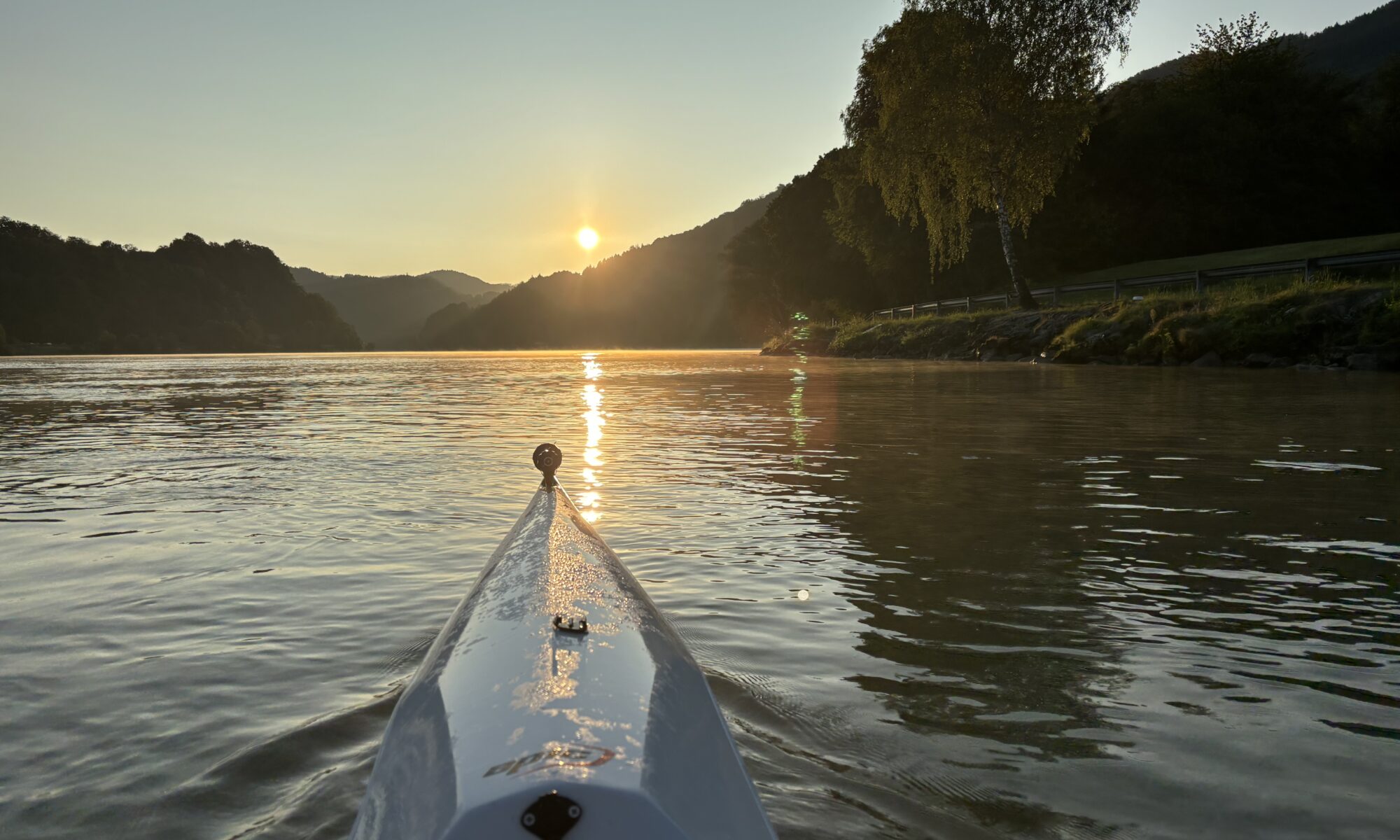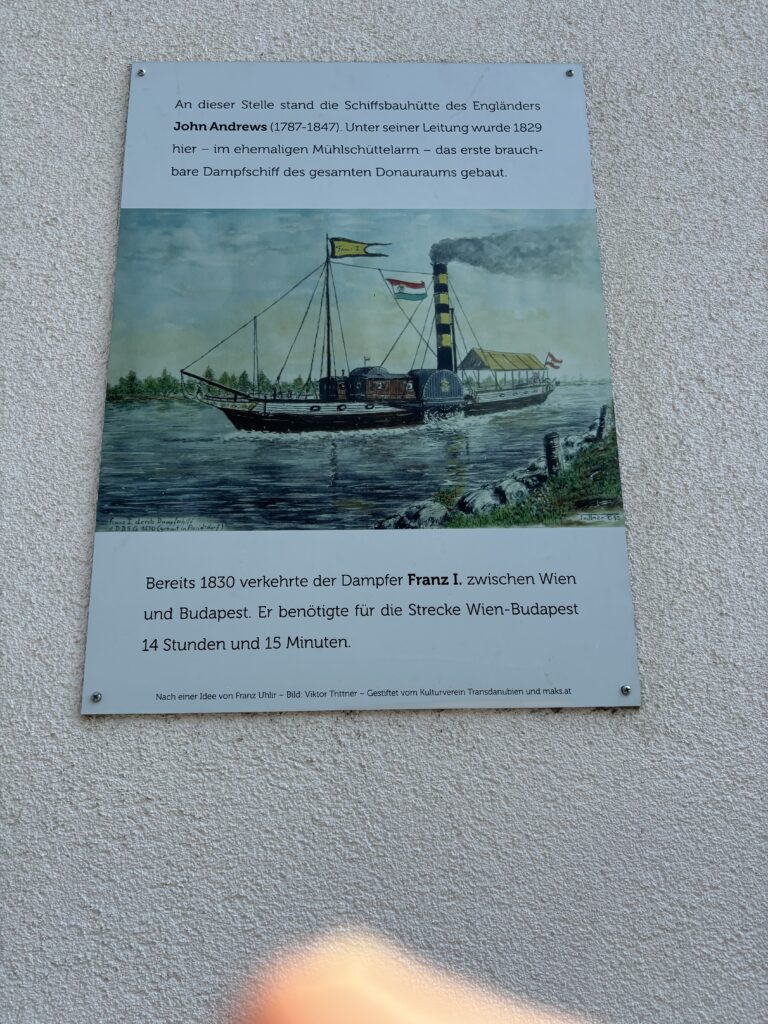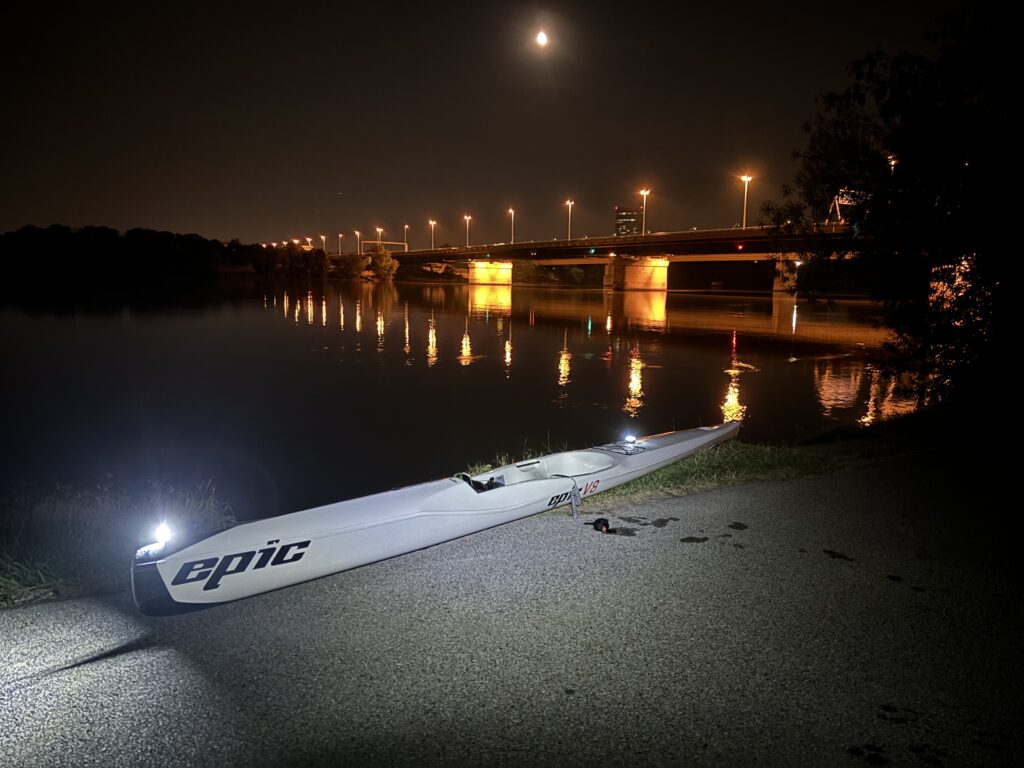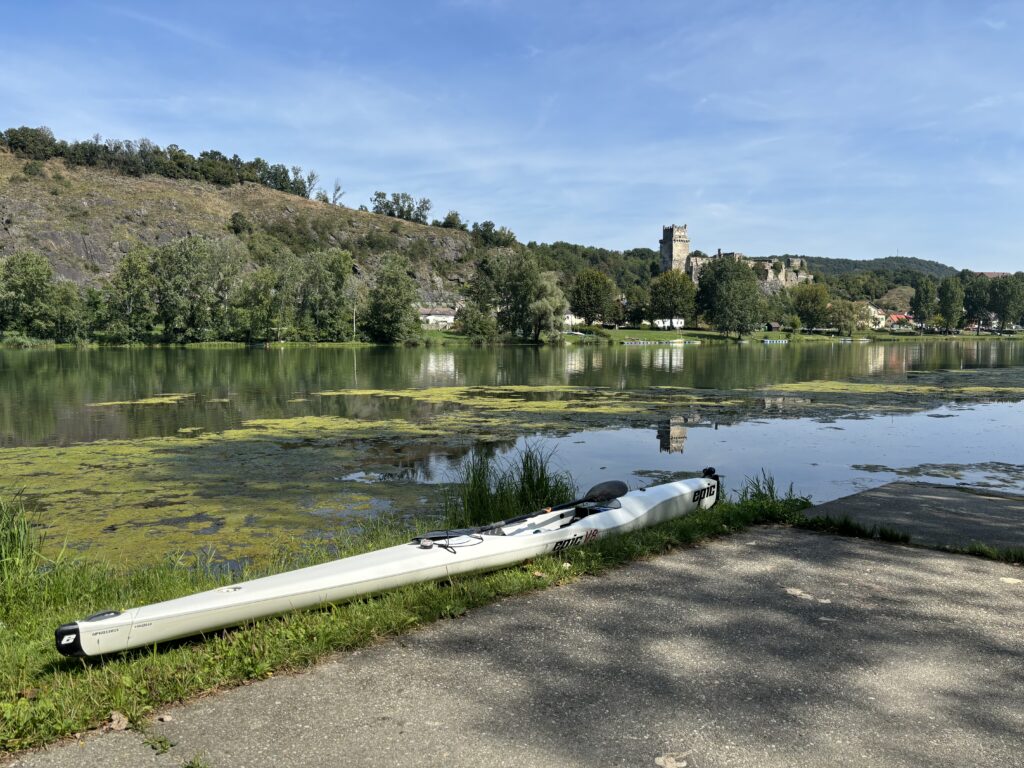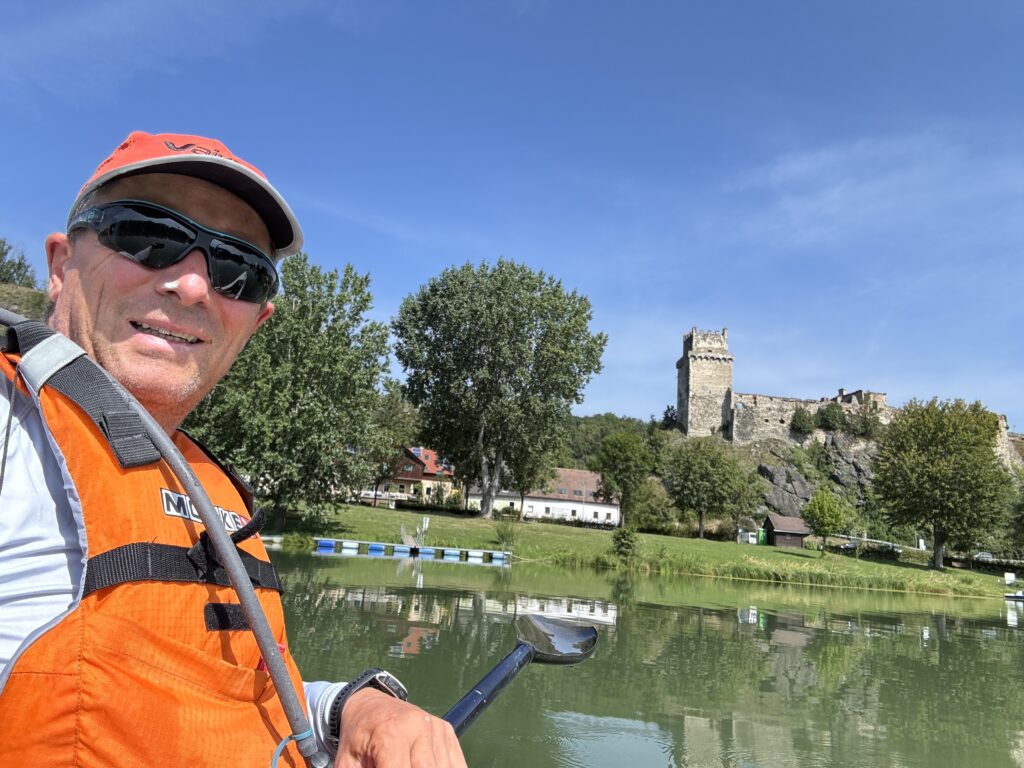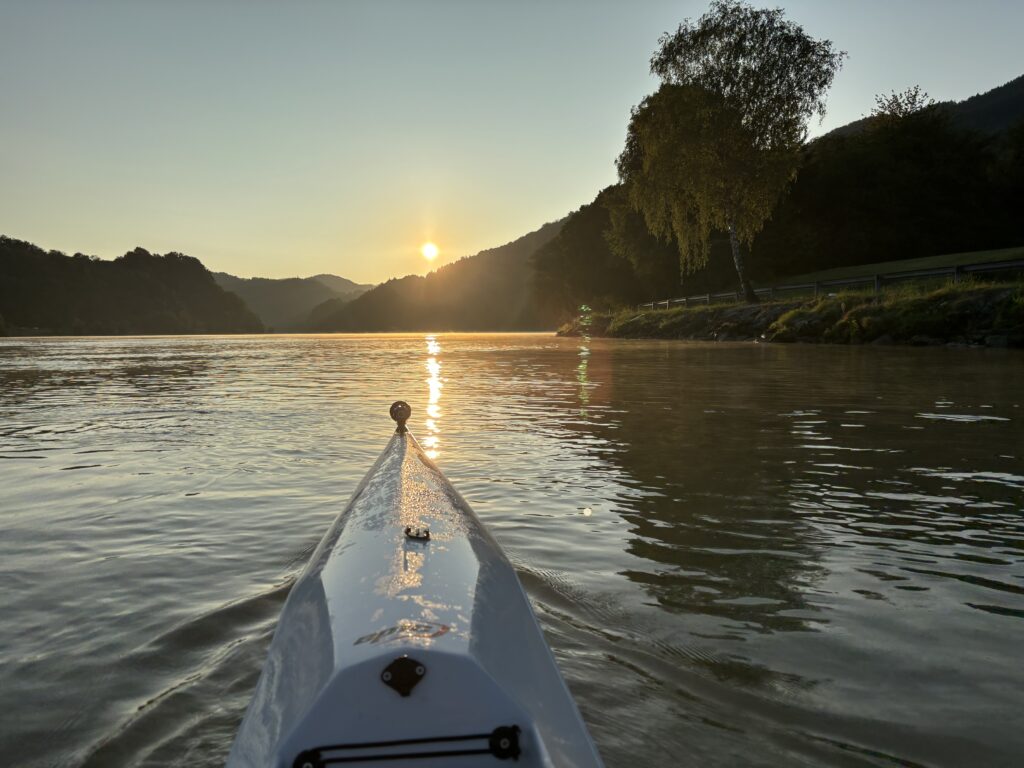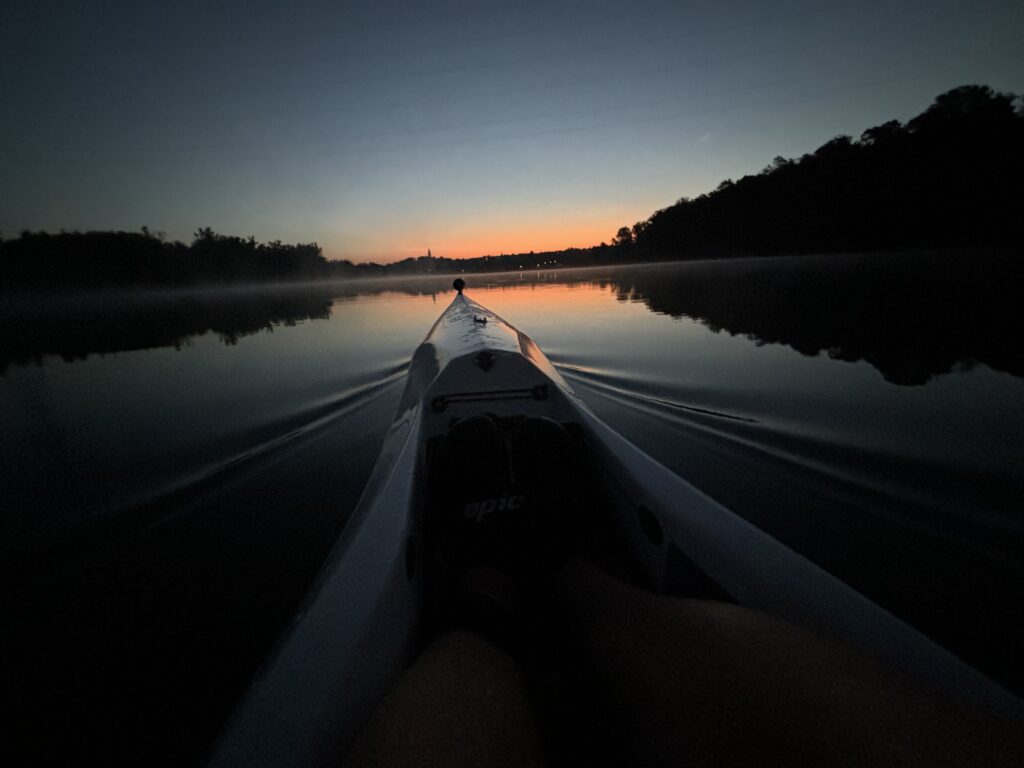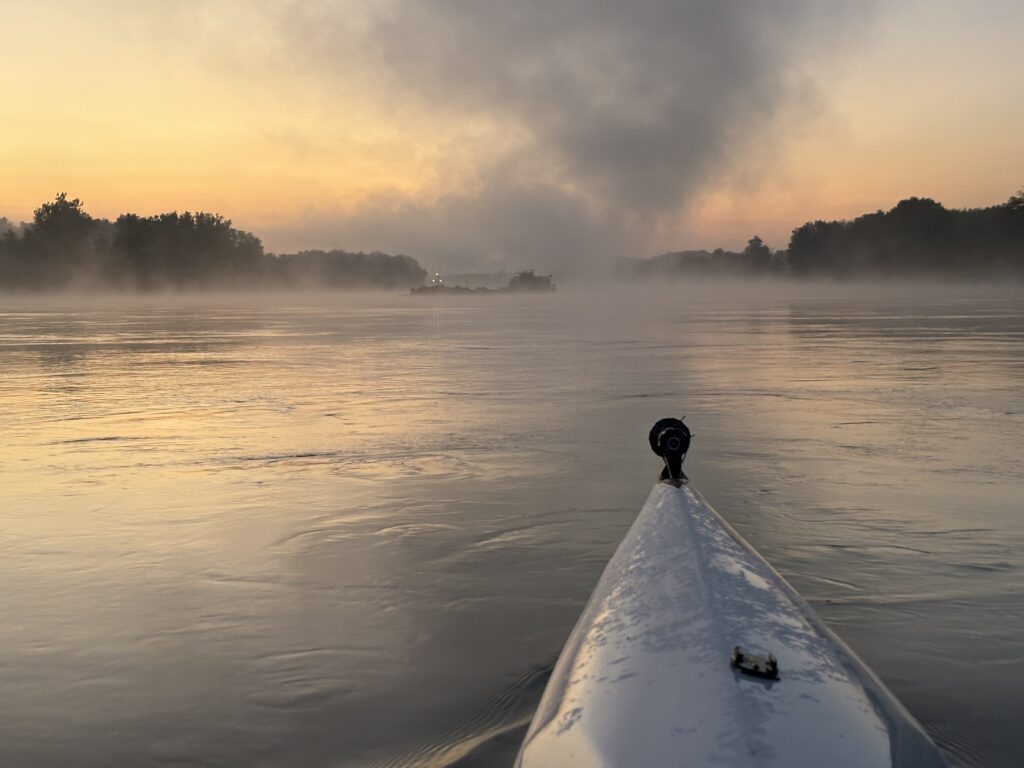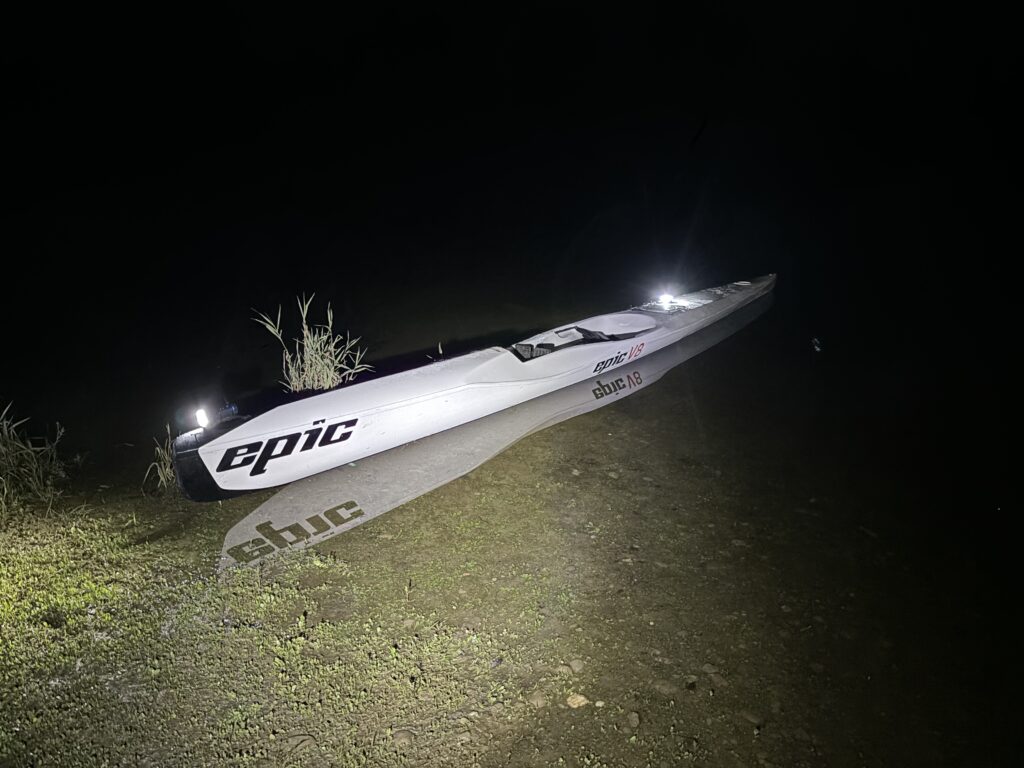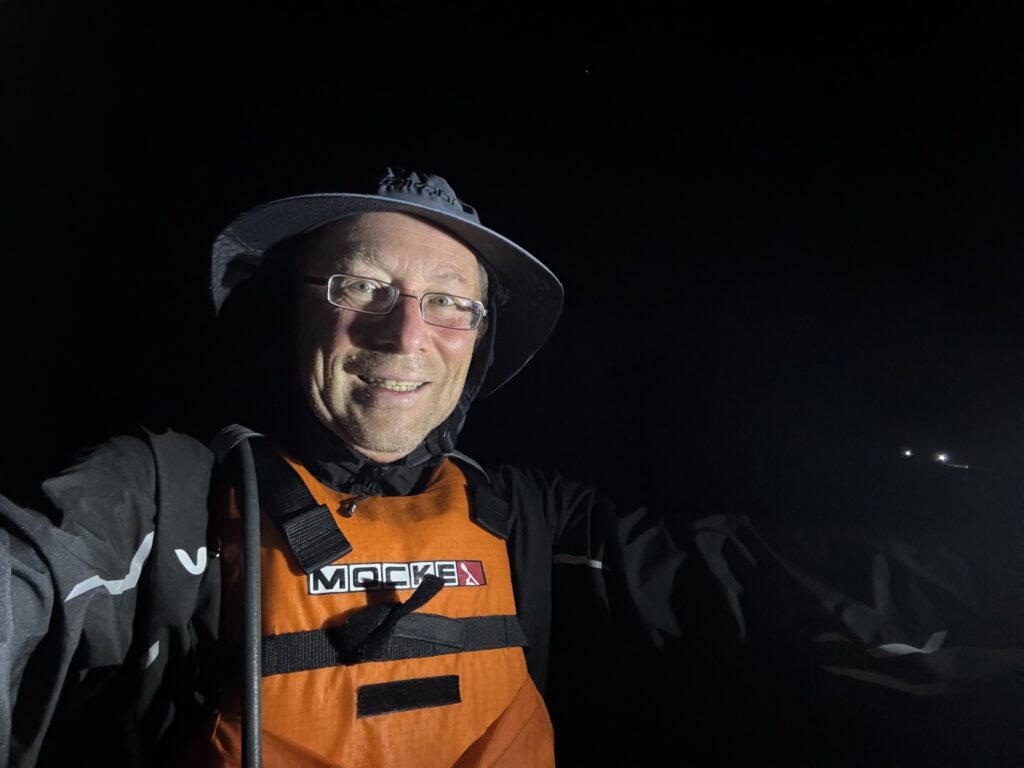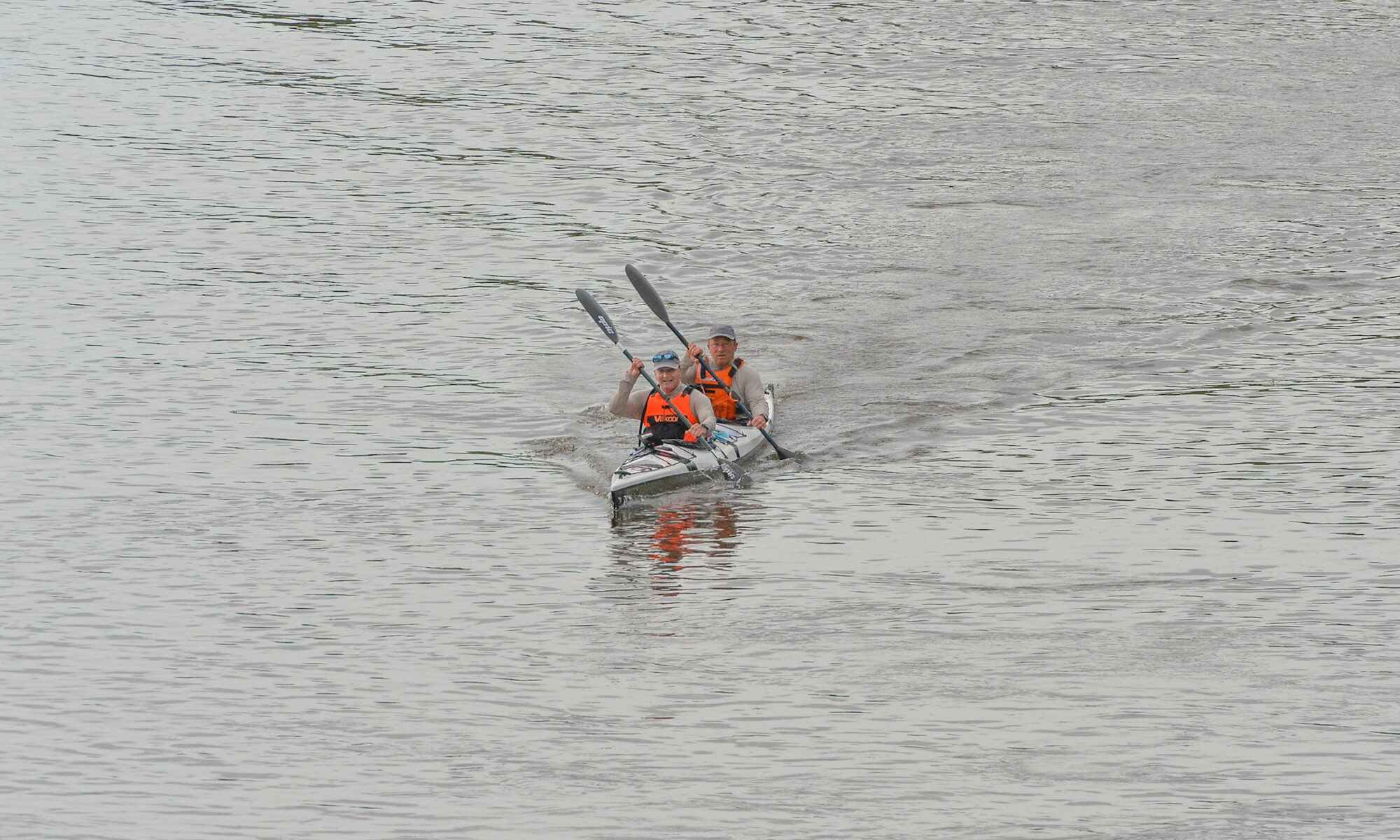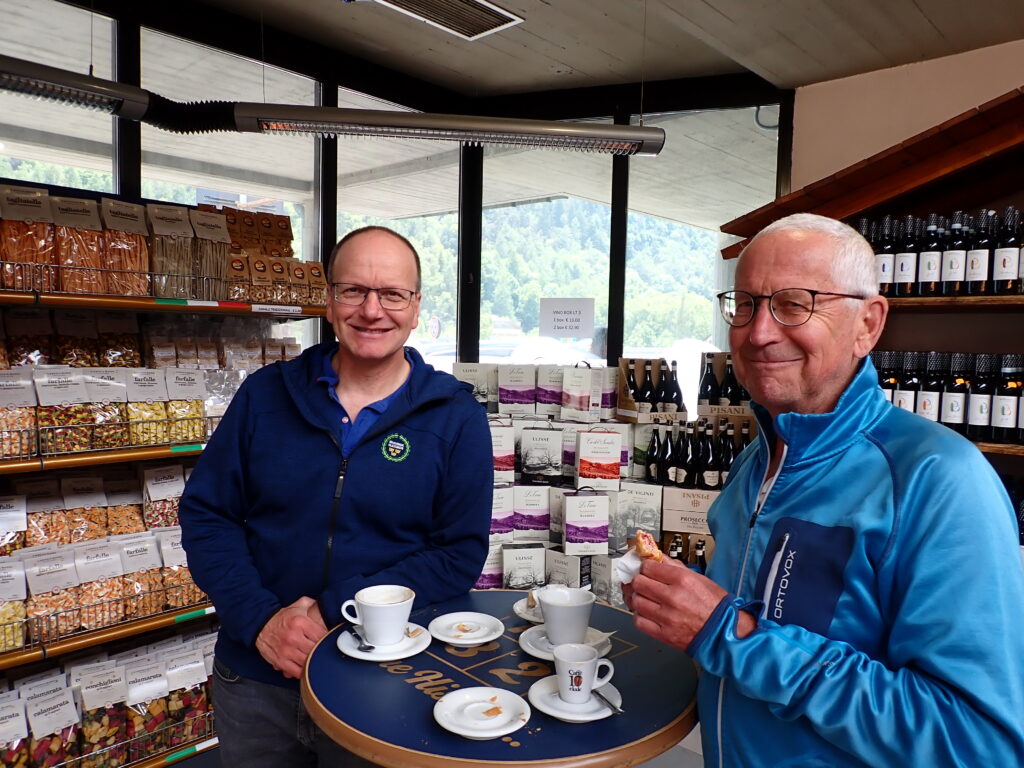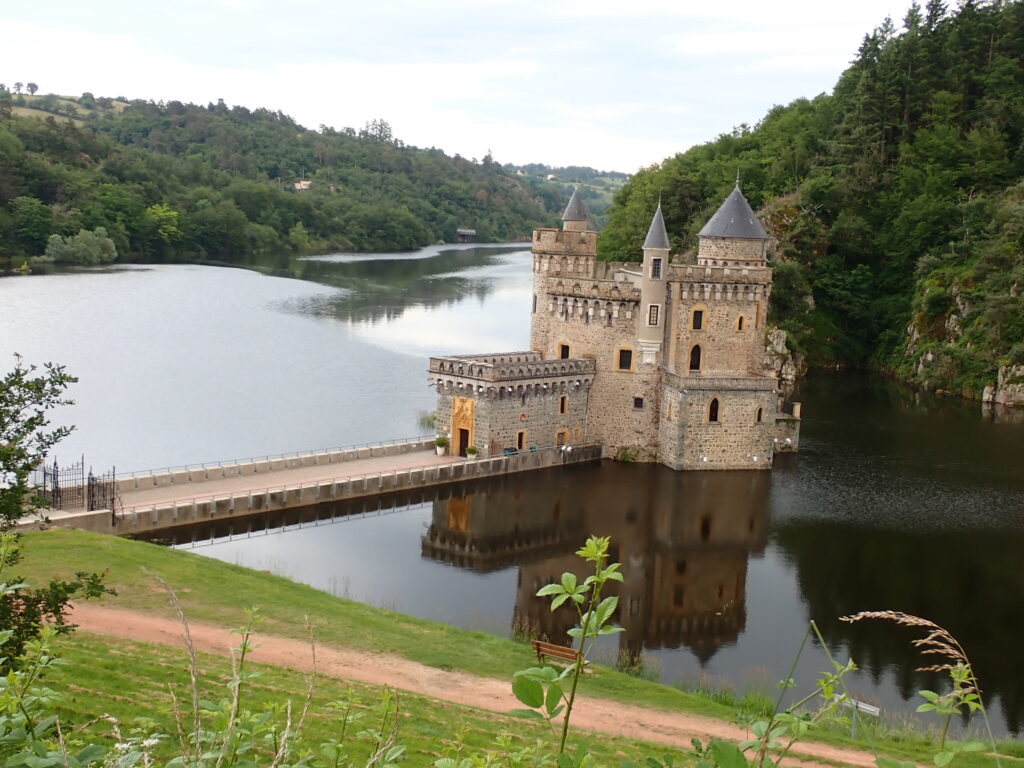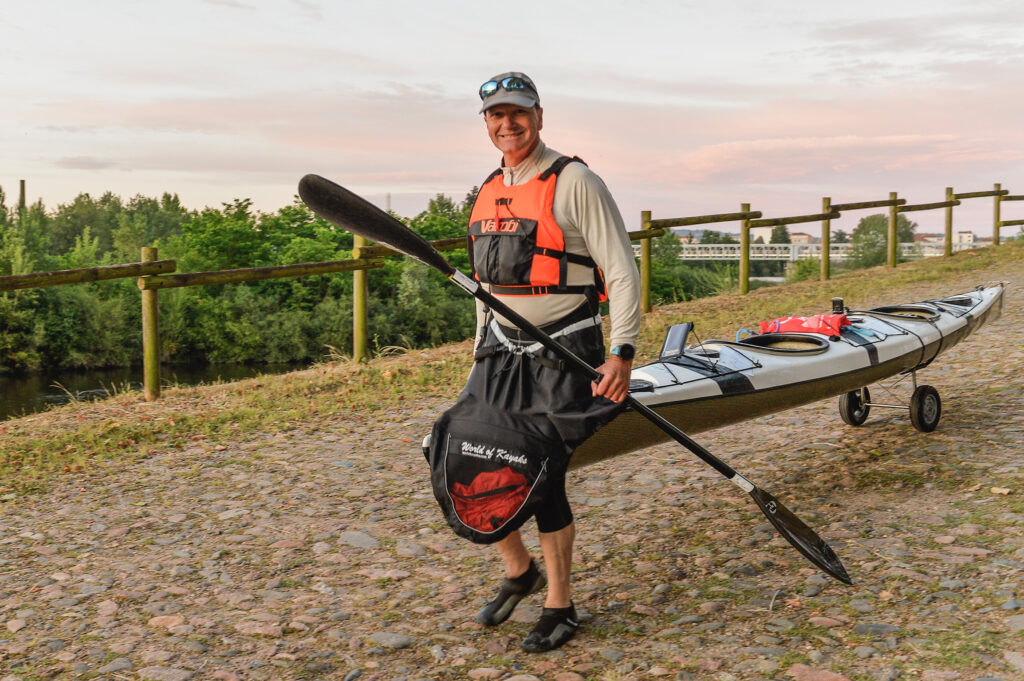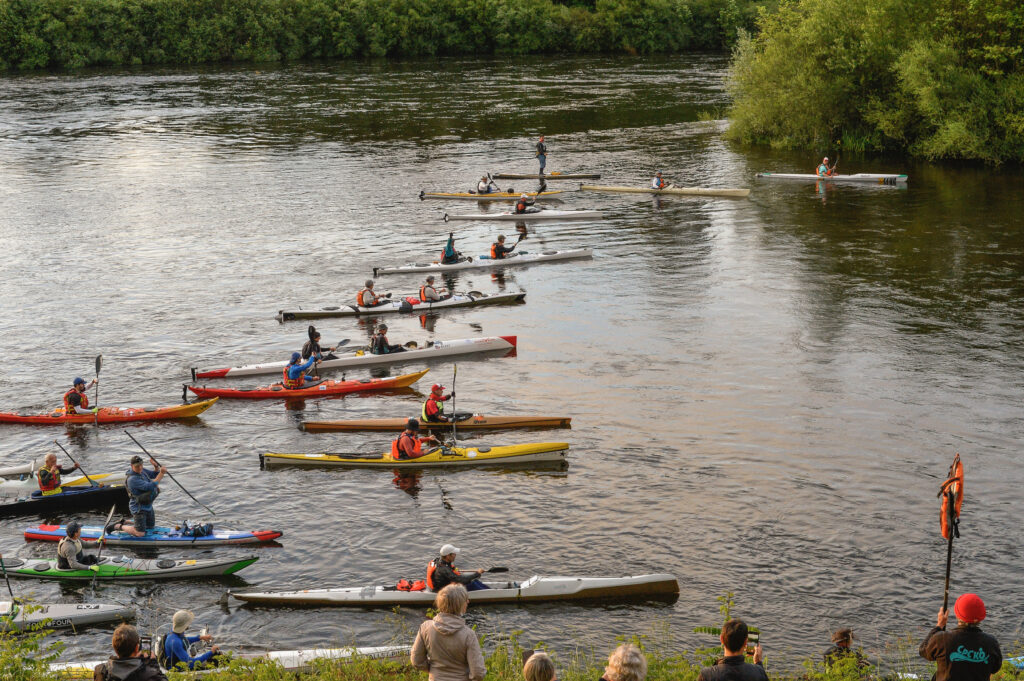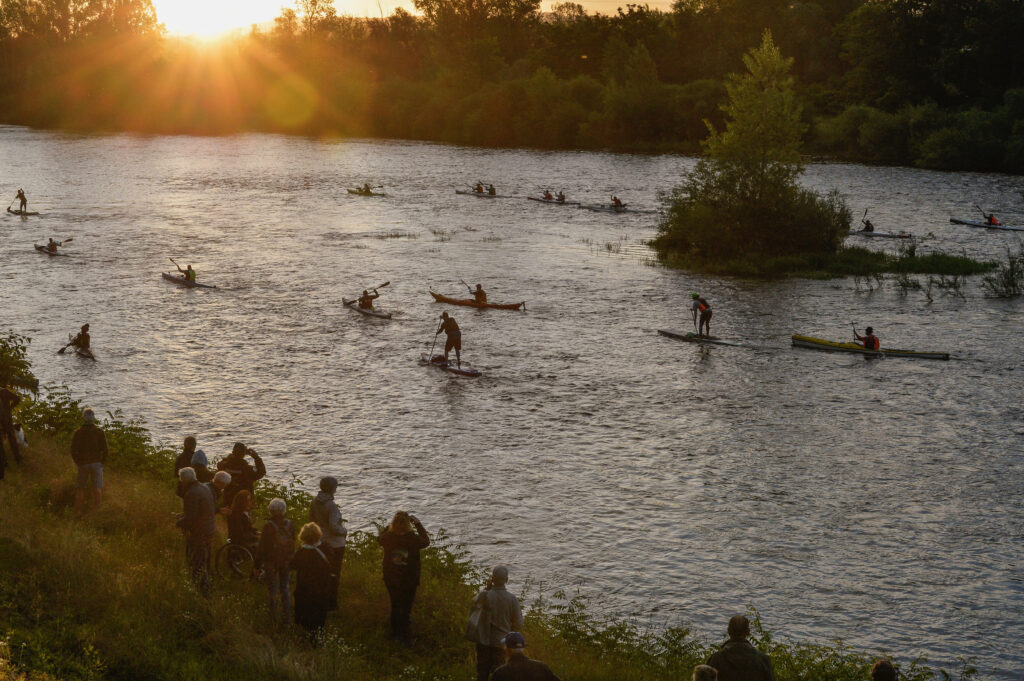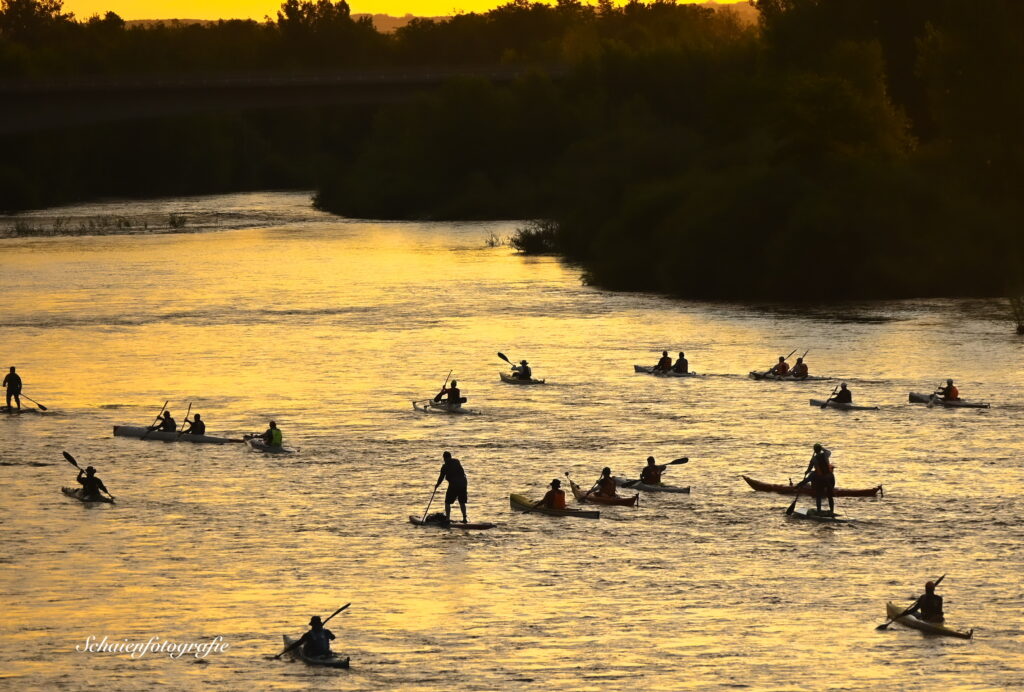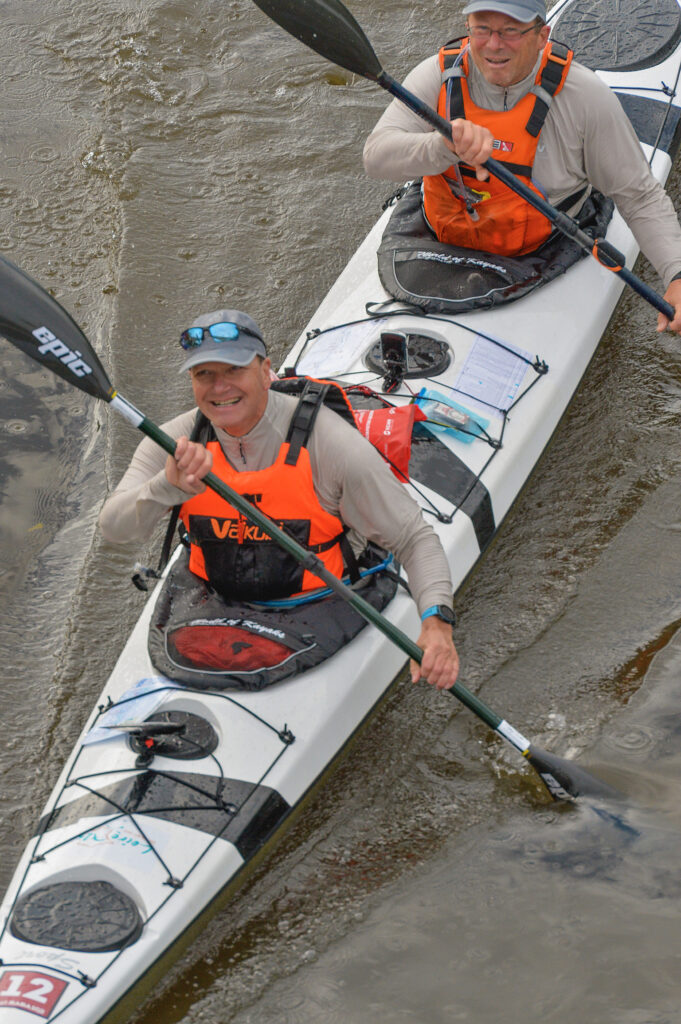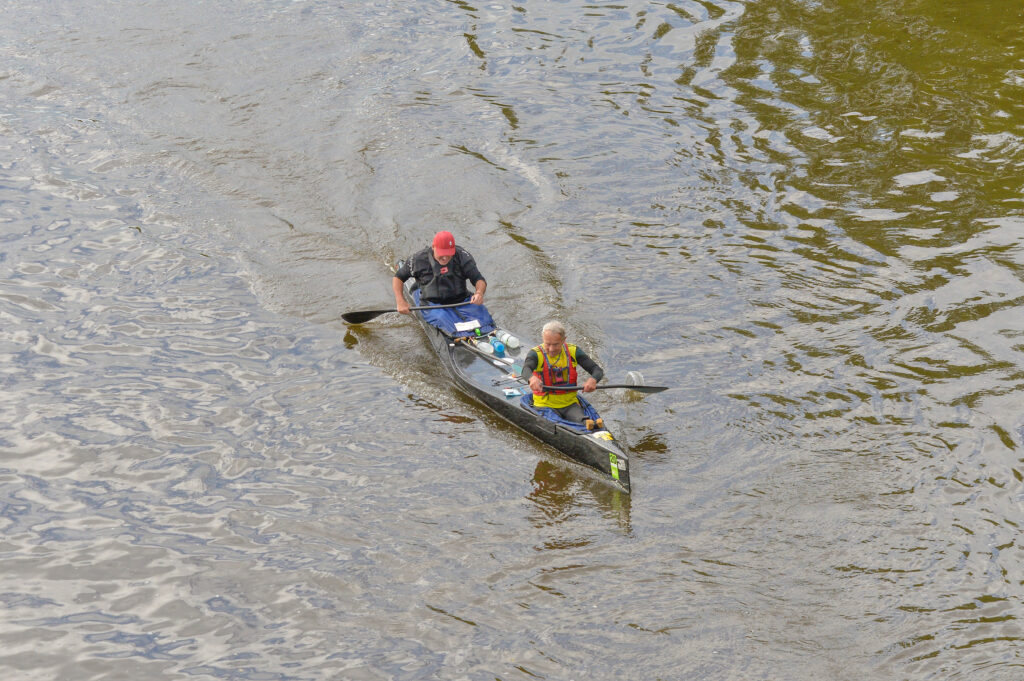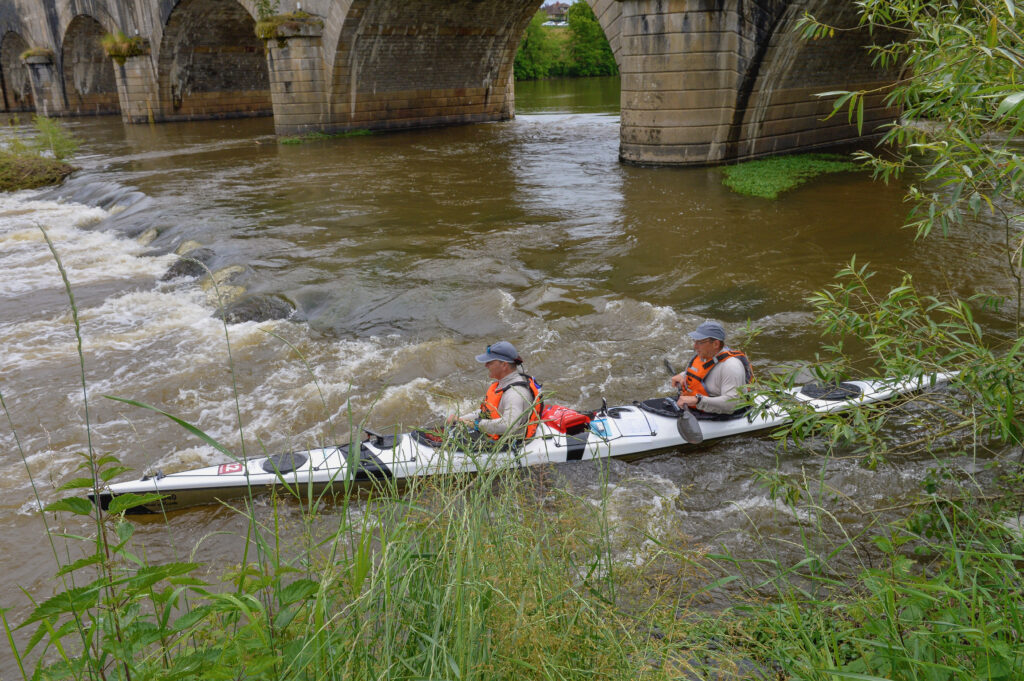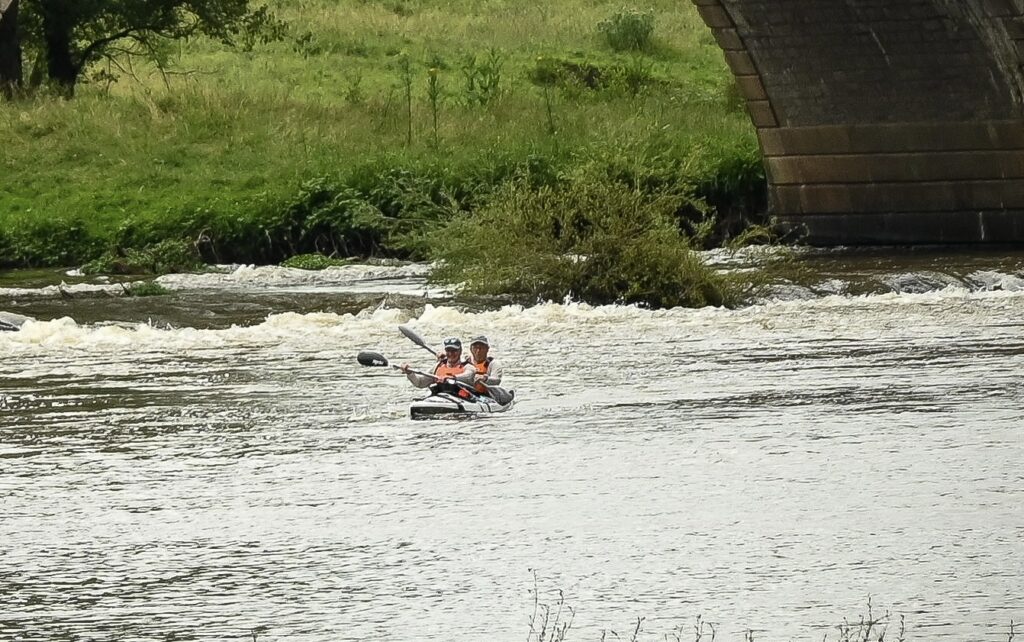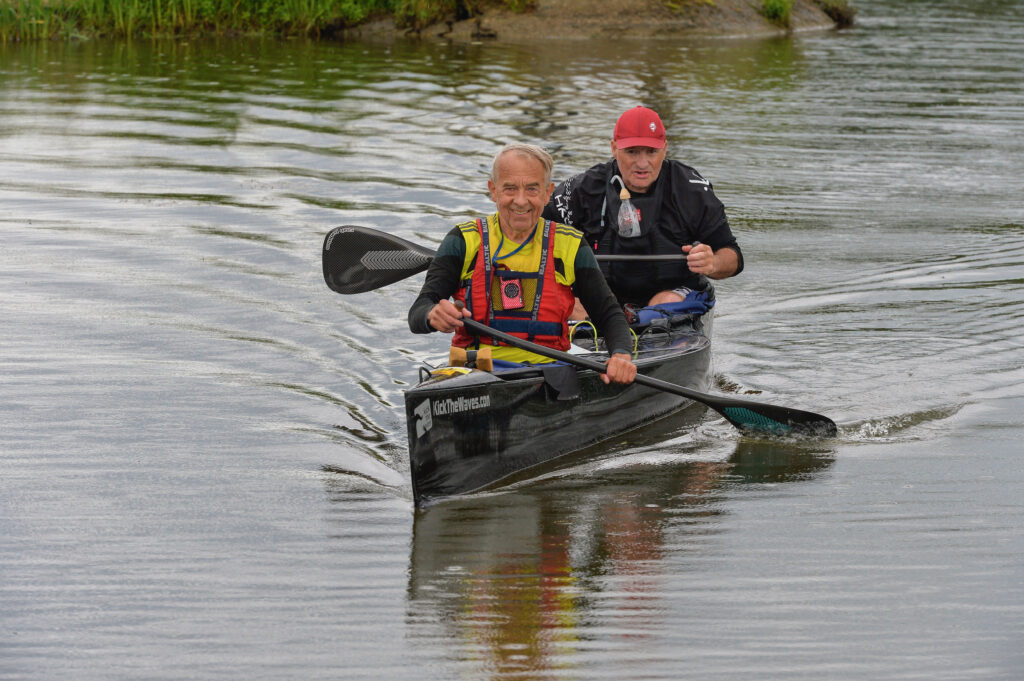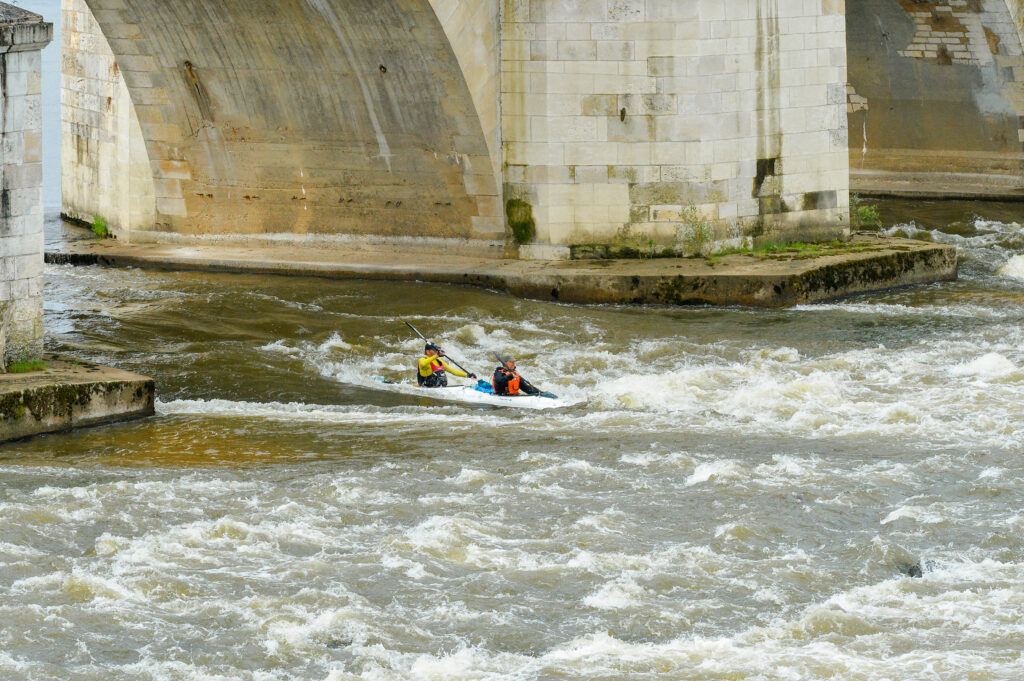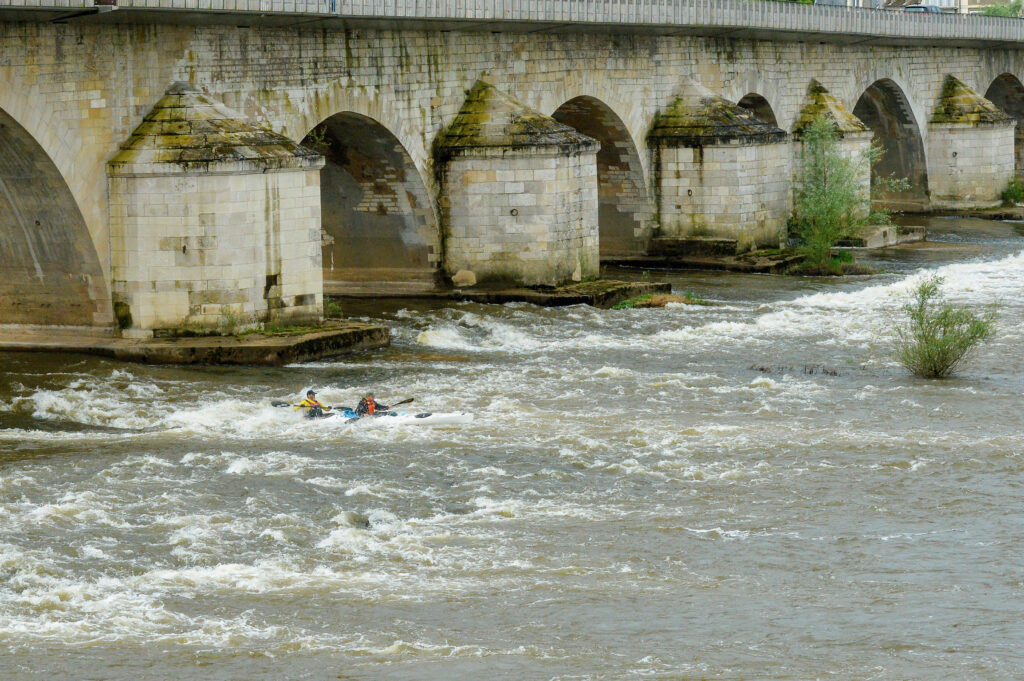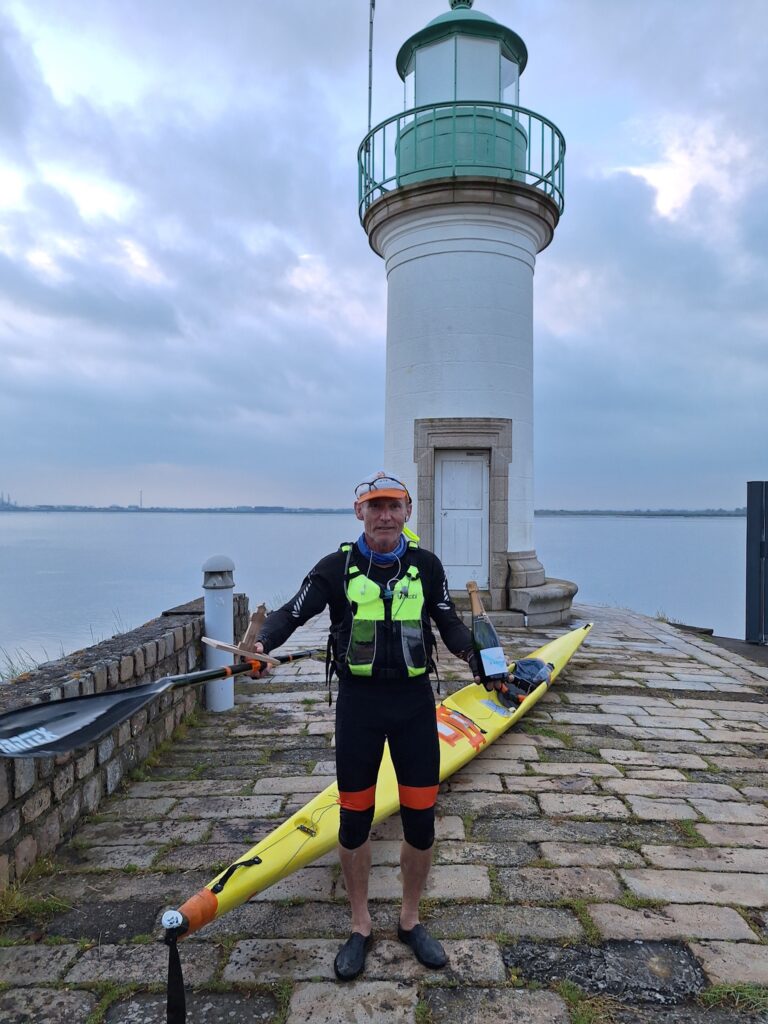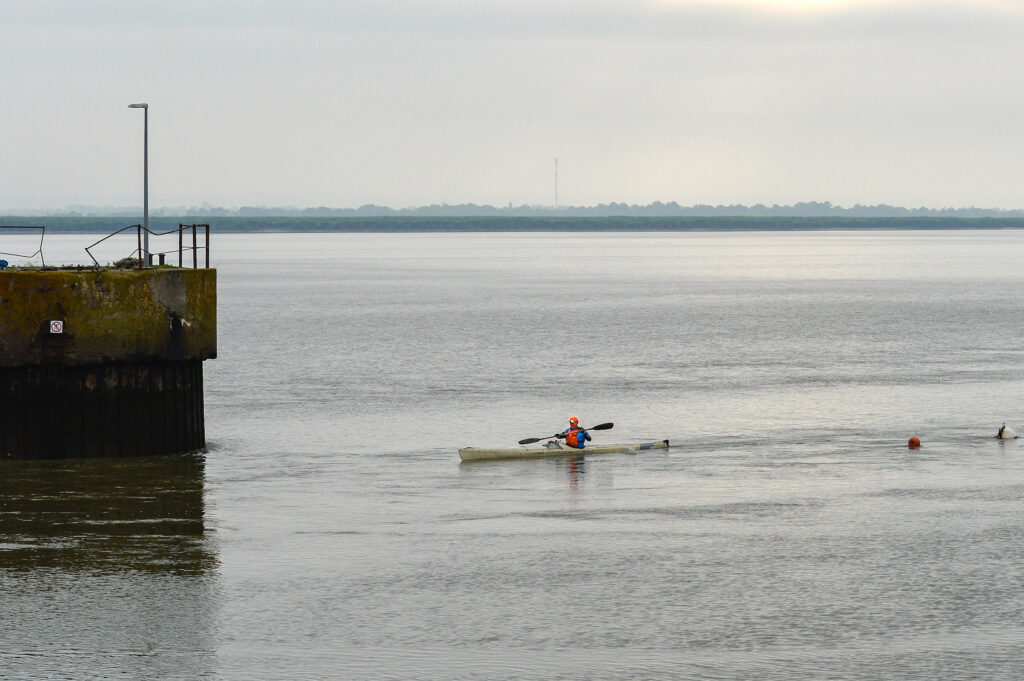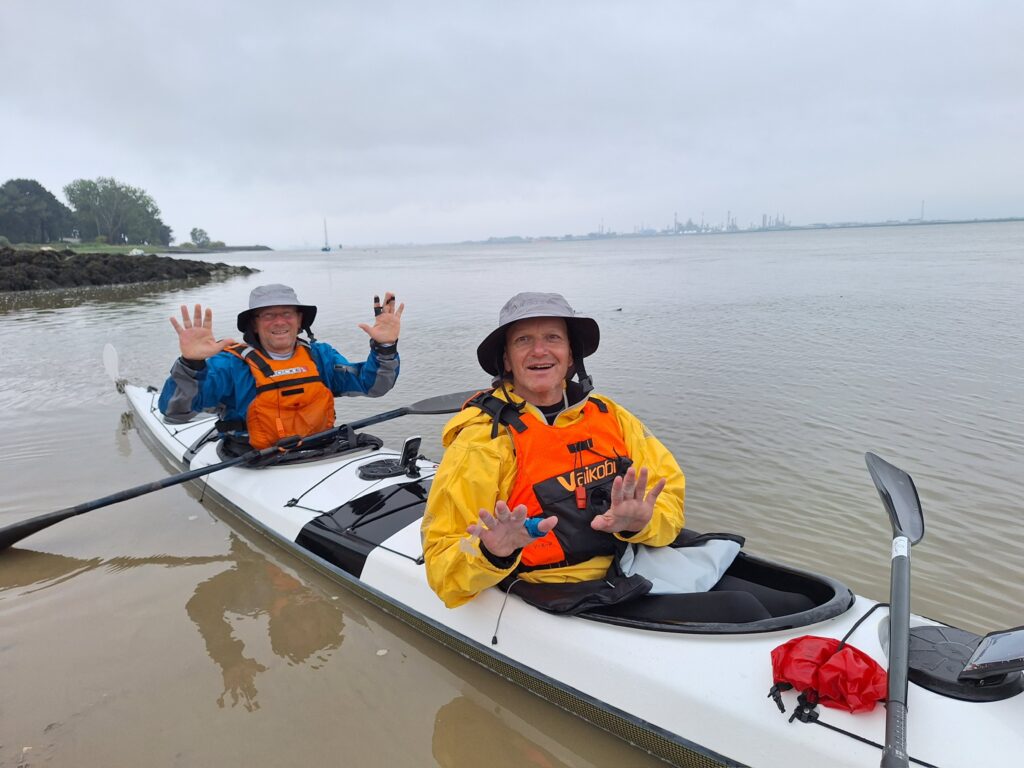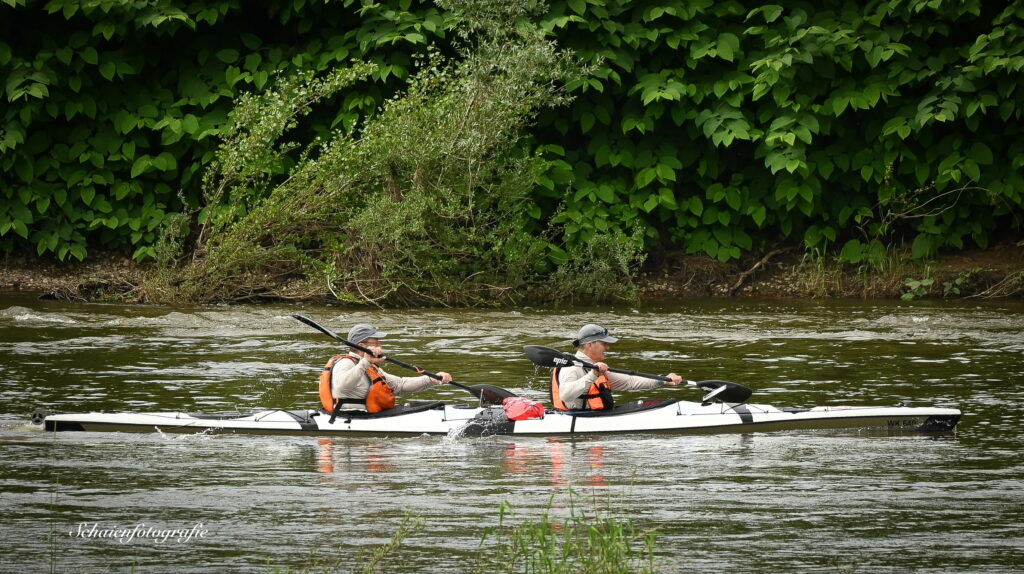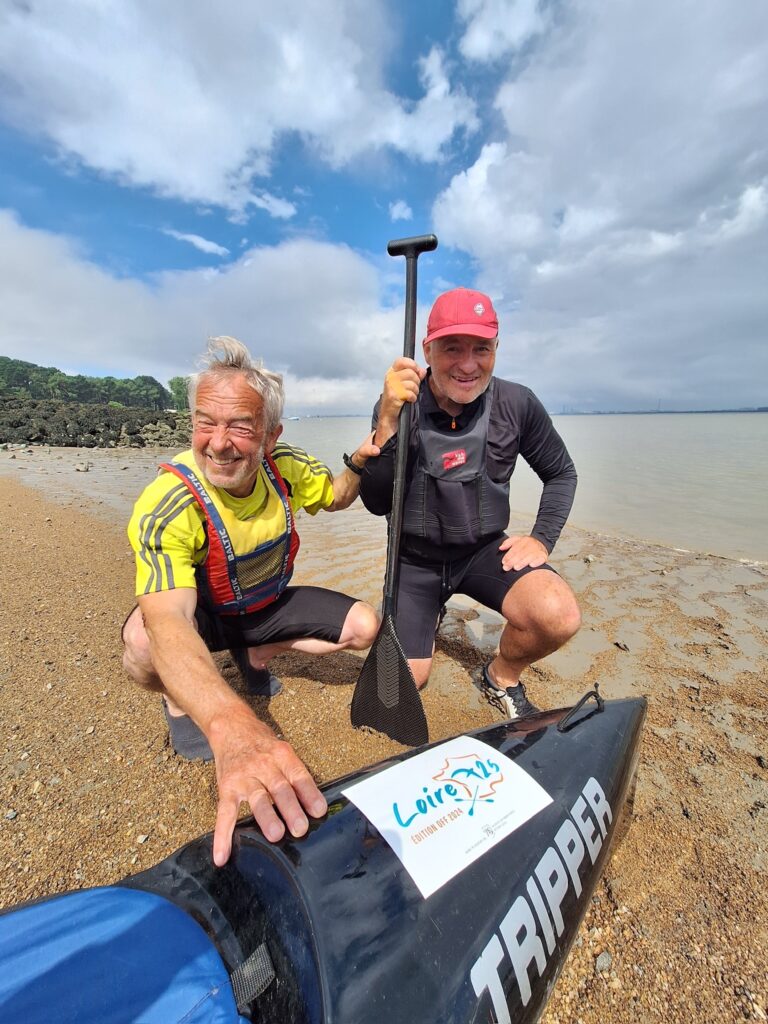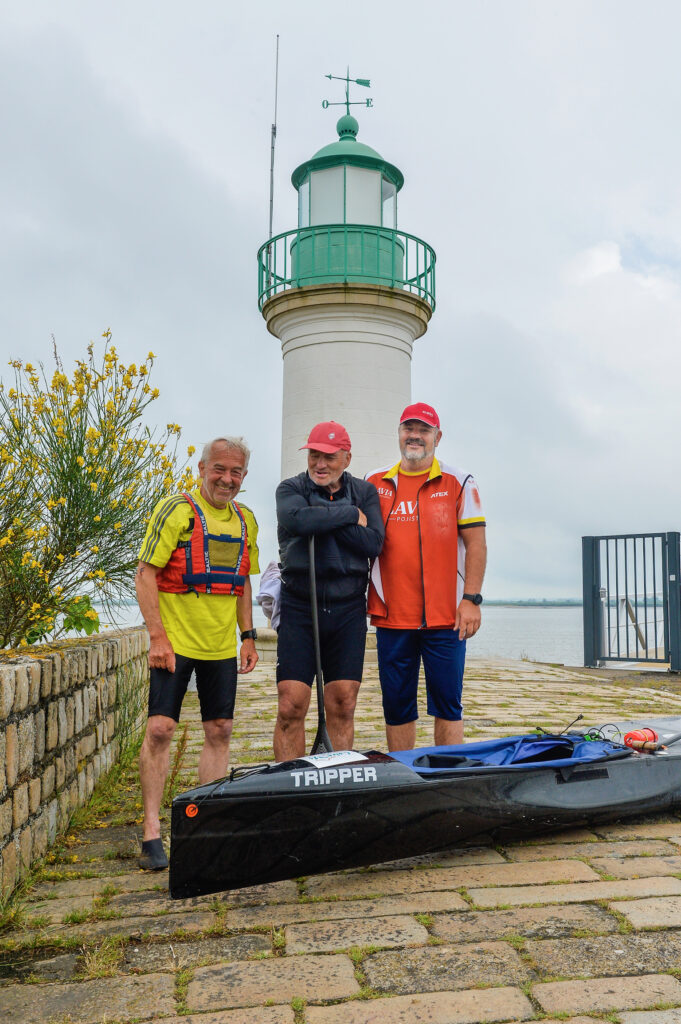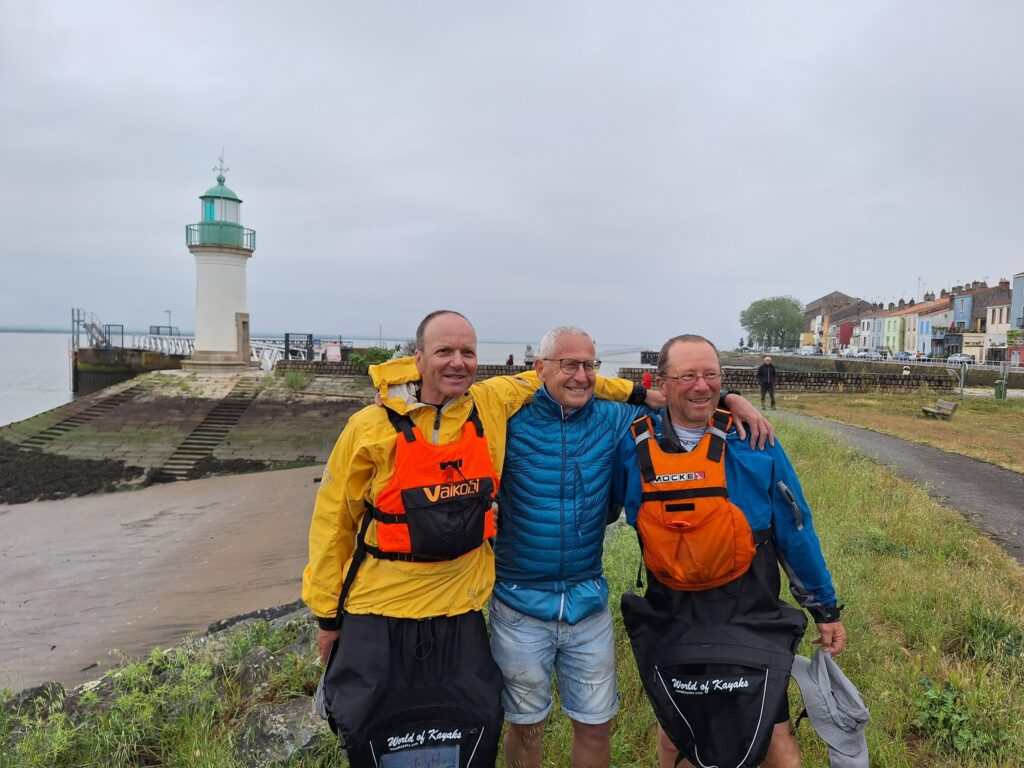VÕHANDUMARATON and Türi – Tori kiirlaskumine – a pair of Estonian canoeing marathons
Diesmal habe ich einen Beitrag von Choros aus Padler.cz ausgeborgt, Danke google für die Übersetzung!
3. 2. 2025

George „Choros“ Hron

Change is life, as they say. Every year at the end of winter we go paddling to Indonesia, usually to Sumatra. Since we had to miss this opportunity last year due to Pašík’s injury, we have a replacement, and it is the absolute opposite. Instead of the heat, we will go north. Paddling marathons in Estonia. This should guarantee that we will not die from the heat, and the winter can be overcome with suitable clothing and hard paddling. Having two relatively long marathons on two consecutive weekends will definitely test the readiness of us, who have long since left our junior years behind us. We signed up for the Türi – Tori marathon (78 km) on April 13th (there are also 47 km and 104 km courses) and a week later, on April 20th, for the 100 km long and somewhat traditional Võhandumaraton, which Pašík and I have completed ten times already.
Türi – Tori quick shot
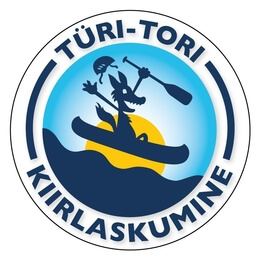
The river race (as the Czech translation goes) takes place during spring high water on the Pärnu River and is intended for athletes and hobby paddlers on kayaks, canoes, rafts and all other vessels powered by muscle power. This is what the organizer’s invitation says.
The agreement was clear. Pašík and I will go to the C2 Türi – Tori and at Võhanda I will be replaced by Tomáš Kasal at C2, with whom Pašík trains in Olomouc, and I will go to K1. We managed to attract traditional rivals and friends to both of these marathons. For K1 Honza Bělek, Michael Kaplan and Andreas Altendorfer from Austria.
Türi – Tori and I completed the C2 with Pašík in 2017 and we finished second overall. It was really cold then, -2°C at the start, and we believed that it would never happen again.
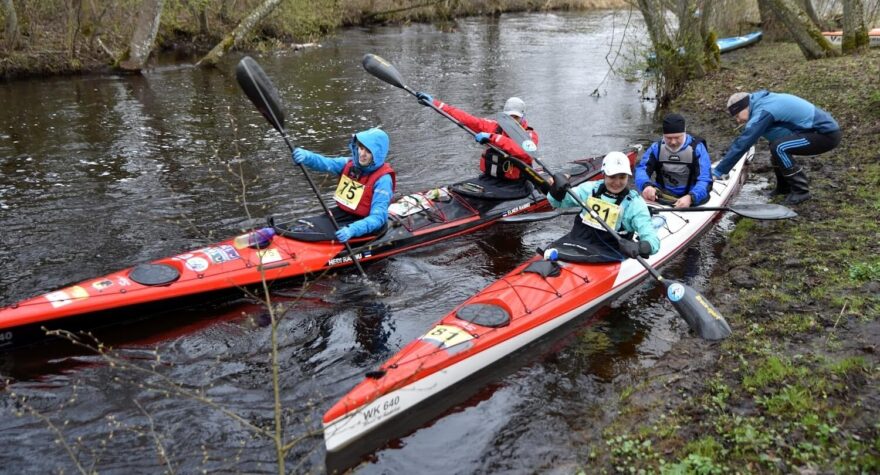
In the Czech Republic, spring has started early this year with temperatures slowly approaching summer. Upon arrival, we were convinced that winter is not over yet, at least here in the north. Accommodation in the Klaara-Manni guesthouse not far from the finish line is great and this year the final announcement and dinner will also be held here.
After a long journey, five of us meet at the guesthouse in the afternoon. The next morning, training is scheduled and for beginners, exploring a part of the Pärnu River (about 15 km). It is certainly not hot, it is a little windy, and the sun sometimes shows up. Pašík has to try out a new life jacket with space for a camelbag on his back. This is a new way of drinking, because last year’s bike accident makes it impossible for him to drink from bottles attached to the deck. The test was really „successful“. The low iron bridge that we know is soon after the start. I lean forward and ride through it easily. The blow follows and we stand. Pašík leaned back, the camelbag did not allow him to properly lie down on the deck and he tried to move the bridge with his head. He gets hit quite a lot, but „it’s nothing“, so we paddle on.
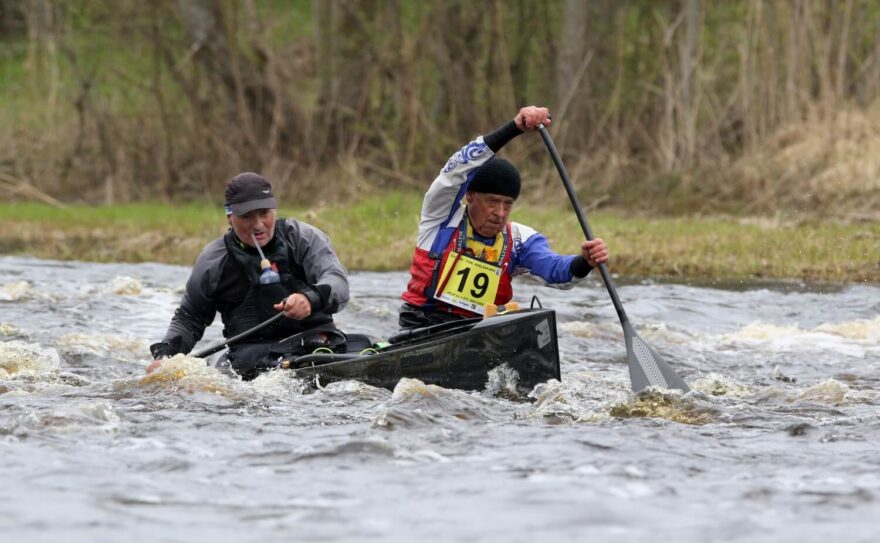
We also went to see other problematic and interesting places. The river is fast-flowing with occasional rapids and several collapsed weirs. The only place we were really worried about was the weir with a sluice and a large cylinder, which defeated many competitors during our last start. But this time it disappointed us. The entire water structure has been repaired and the passage is absolutely fine, only small waves, so there is nothing to worry about. The EU has already reached far north with its finances.
I remembered this place from the first start in 2017. When inspecting the culvert with the huge cylinder, we evaluated it so that we would rather move this place than paddle wet that winter. In the morning at the start -2°C. A few minutes ahead of us, the Estonian pair C2 MIX Kahu – Kahu on Tripper starts. We paddle really fast to overtake them as soon as possible. We still don’t have them in sight and we arrive at the problematic weir. Pašík is in uncompromising command, let’s go. I disappear in the cylinder, the water goes over my head, but we continue on. MIX is still nowhere to be found. We reach the finish line after 78 km as the second boat overall in a time of 6:56:30. Only at home did we learn from the photos that the pursued MIX had capsized and swam out on the first rapid. On the way back, I didn’t notice them, as Pašík was chasing me, and it is understandable that he didn’t see them.
This marathon starts at intervals, from the shore. A monitor is mounted on the car, displaying the names of the competitors and the start time. It is a gloomy, cloudy early morning. The fog is slowly receding, but there will be no sun today. Nevertheless, the meadow is teeming with paddlers. Many of our acquaintances from marathons are here, and judging by the caps, we can see how many of them were at the KVM. The large number of C2 Tripper canoes, which are manufactured in our country, is also pleasing. Many of them have already been sold to the north. As Pašík says, I am a good marketing tool. When they see me after the race, they say they understand that how well we ride cannot be in me, but in the boat, and another order is placed immediately.
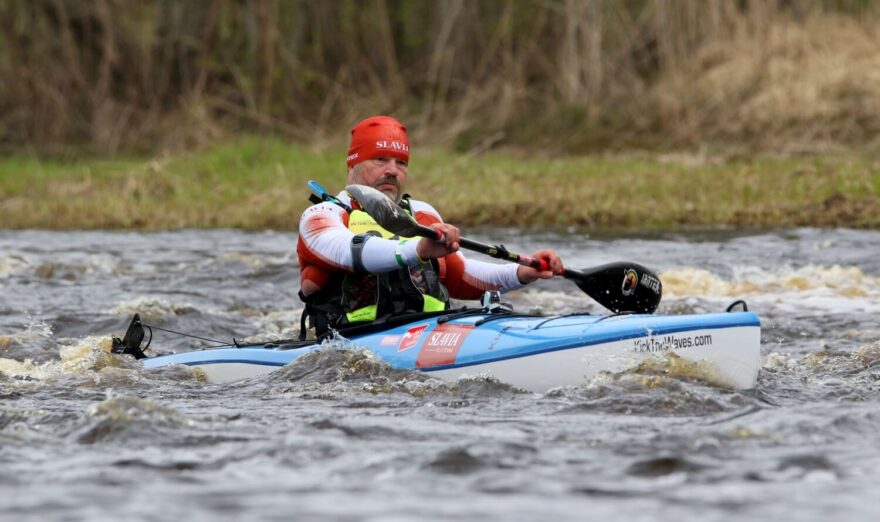
The river at the start is narrow and meanders through the landscape. It would be impossible to start from the water. Such a start has a disadvantage, it is not possible to check the order during the race. It is paddling in cold weather with an unpleasant headwind. I did not put on my paddle bags, hopefully I will warm up soon. But the hat will make it safer. After the start, we gradually overtake the boats that started before us. There is only one mandatory crossing at the weir on the course, which we could do from our point of view. In previous years, we did, but the place where we did it years ago was blocked by a log. There is also the only refreshment option here, which I am forbidden to use. We reach the grassy bank and the situation changes. If we had done the weir, I would have been wet. Here, Pašík traditionally fell into the water while getting out. At least he got to know what it is like to paddle all wet. But the truth is, you don’t think about it during a race.
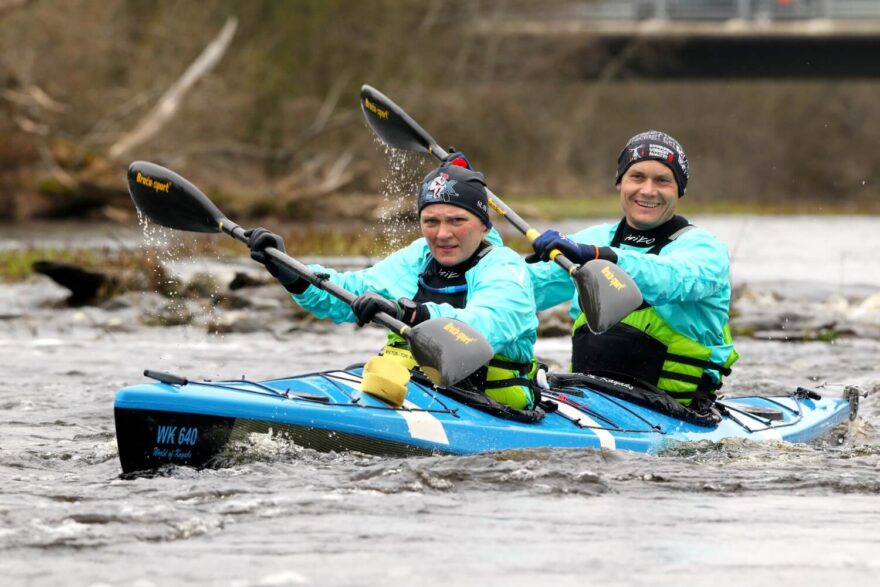
The race went well from our point of view. Andreas was the best, but Honza and Michael suffered their first defeat of the year, although from the 40th kilometer my shoulder started to bother me a lot, strangely enough not the operated one. I didn’t dare complain to Pašík and pretended to be healthy. I just shortened the intervals of switching from the right side. Pašík with a broken head, I am crippled in my right hand, but the race was still successful for us. You can find the results and more about the race at www.tyritori.ee .
At the finish line, we were immediately hit by a huge cold. I only arrived at the tent, which was freezing, when we managed to slip into dry clothes with chattering teeth. Hopefully Pašík will forgive me for the logistical mistake.
Accommodation close to the race finish is also a big win. After the sauna, where most of the competitors rushed after finishing, it was already good. The competitors receive dinner, diplomas, medals and small prizes gradually as they arrive. Some competitors arrive very late. I really admire how long they can keep paddling in that winter.
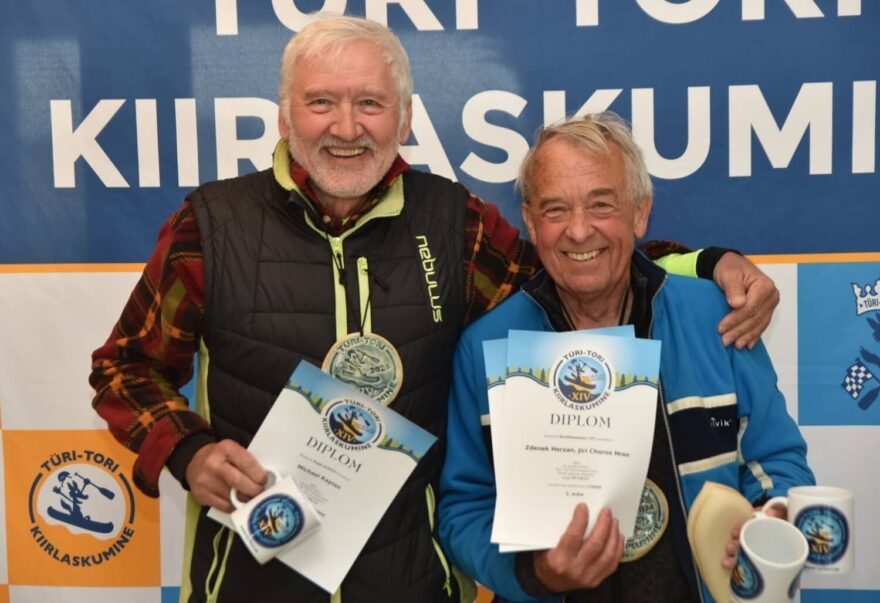
How would you rate this marathon for potential participants? It is certainly interesting and unique. We don’t have such a river in our country. It is run early in the spring, actually on melting snow. In the summer, the water is definitely worse. The peaceful northern nature has its charm. The landscape is sparsely populated, fields, meadows, forests, peace and quiet all around. Anyone who is always looking for something new, this race is definitely worth exploring.
VÕHANDUMARATON
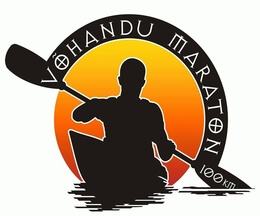
We say goodbye to the Pärnu River and move to the east of Estonia. We drive through the famous city of Tartu. Recently, the 63 km long Tartu Ski Marathon was run in the area. It is quite cold, so skiing is definitely closer to that than canoeing.
The goal is our traditional accommodation, which we named Sauna haus. The name came about simply because when we heat the stove, we also heat the sauna at the same time. It is heated with wood, which is prepared here. It is a few kilometers from the town of Voru, where the marathon will start on Lake Tamula. We are a few meters from the Võhandu River, so the first river crossing is traditionally from this place.
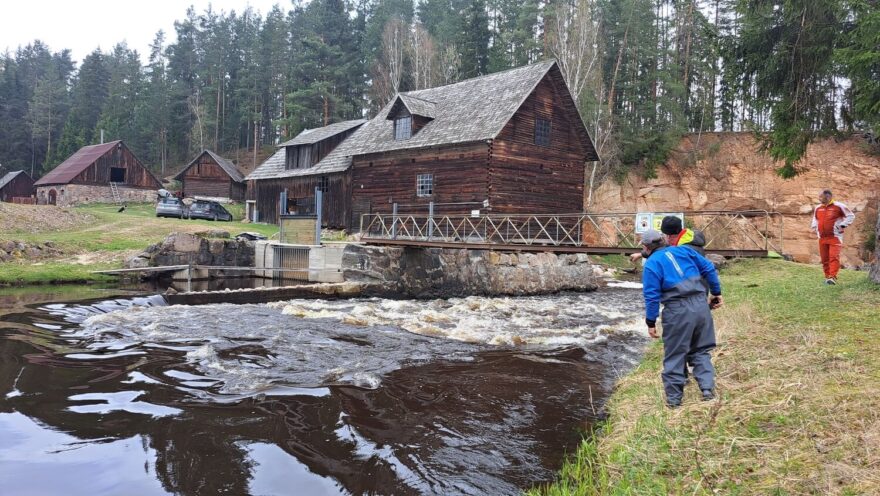
During the week, other competitors we invited to this marathon will be joining us, not only from our country, but also from Slovakia and Austria. The program for the next few days is to ride some parts of the river and show important places, especially to those who will be doing it for the first time. The weather is very cold and the forecast is not encouraging for the race. It is supposed to be below zero and maybe even snow. My shoulder is gradually stopping hurting, so I believe I will start. I have borrowed a brand new Bora kayak. I’m just worried that I won’t scratch it somewhere on Pašík’s. He trusts me, after all, I have to know this place well…
Pašík is worse off. A broken head is not a problem, but falling on the corner of the seat slightly crunched his ribs, so everything was solved by a phone call from Tomáš, with whom he was supposed to go to C2, that he was sick and that he would not come. It’s a shame, we are always together here. That puts me at the top of the list of starts in this marathon. It will be the eleventh time.

On Friday afternoon we go to collect our starting numbers. I meet the race director. Hillar Irves and his team have been instrumental in popularizing this race, where the number of participants in various categories increases every year. This year, 1,300 boats are expected to start! There are excellent kayakers and canoeists here, but many of the participants are competing with themselves because they want to prove that they can do it. Of course, we try to get the best possible position, but we also compete with each other. Performance then fluctuates throughout the year.
The start at 7:00 makes us get up very early. The weather forecast came true. It’s freezing and snow is flying. A real boating atmosphere. Simply put, canoeing is the queen of winter sports. Fortunately, the lake is not frozen, as it was during our first two participations. I find myself in the kayak in full winter gear. Hats, paddle bags, waterproof jacket. This year, we start in waves for the first time. According to the results from previous years, we all have an ELITE wave, which is marked on our starting number.
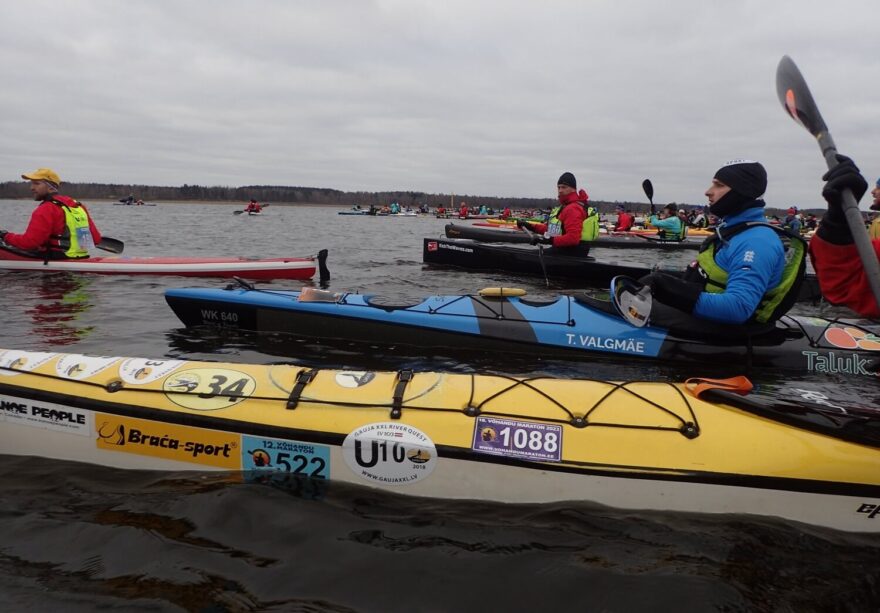
In the next story I will try to describe the course from the racer’s perspective. It is an intense paddling, depending on the water level around 10 hours. However, the limit for finishing is 24 hours, so some will arrive at the finish late at night.
Unlike previous years, the start went smoothly and an endless snake of boats set off on a circular cruise around the lake (about 4 km), and then enter the river at intervals. It’s a great idea, because the large starting field quickly splits up. I line up far in front at the start. I don’t like the waves shortly after the start. I line up at the edge of the racing field and find a reasonably fast K2 boat, with which I can ride the wave all the way to the river. Here, the starting field is already quite stretched out and there is room for overtaking. Rafts are mainly overtaken, which are allowed to circle around the lake. Nevertheless, I admire them when I realize what they have ahead of them.
I have a camera in my vest, so I can take pictures freely while kayaking. On C2 with Pašík, that’s a big problem. He absolutely hates my taking pictures, but when we get home, he doesn’t forget to remind me: „Chorosi, send me the pictures.“ I’m paddling well, neither shoulder hurts, so I’m happy.

The rafts are getting fewer and it is now possible to concentrate only on paddling and the river. After 31 km I arrive at the first crossing, which is called Paidra. On the right is an old mill with a slightly collapsed weir. At the exit point on the left there is little space and even more spectators. It approaches the shore with its tip and willy-nilly gets into the water. The boat is walked (or run) with the spectators cheering for about 300 m. Getting on is already easy and the next 10 km to the second crossing to Leevi the river is flowing fast. The distances between the competitors are already considerable. In Leevi it is easy to get off and over the road past the first refreshment station, which I pass, it is only downhill to the water.
Getting in is worse here, not much space, rocks. I have a new boat and I can’t afford to scratch it. The river is interesting, it flows, but you have to read the water carefully because there are many hidden rocks. There are several rapids that, according to the photos, can test many competitors. Even Andreas Altendorfer, an excellent and experienced kayaker from Austria who is here with us, admitted at the finish that he swam twice.
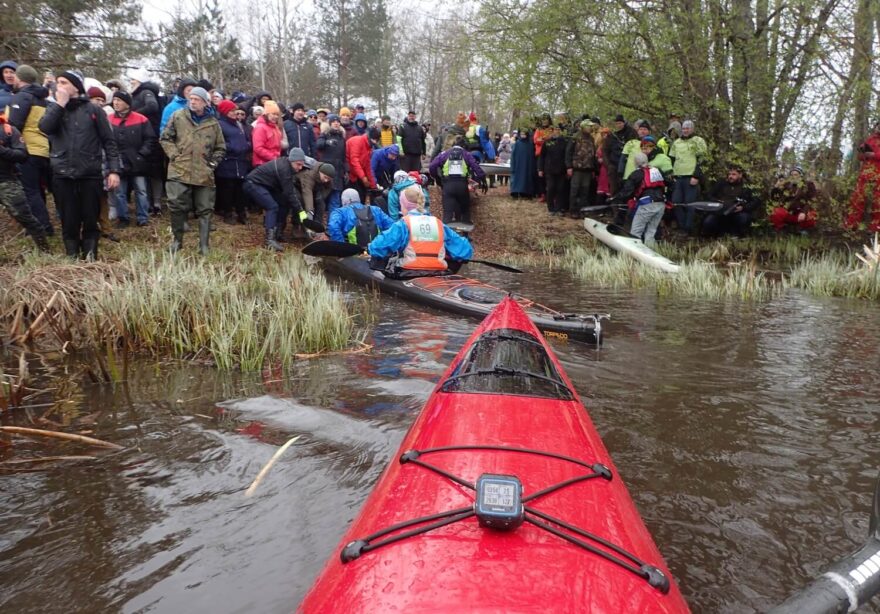
Viira is a beautiful place with several wooden houses and a former weir, where the passage is a problem for many. It is also a place where the competitors‘ passage is filmed, and everyone can then download a nice video diploma at home with this rapid. You go to the right and then turn right. Just below this now-demolished weir, you can see on both banks how those who have been overcome by one of the waves are capsizing their boats. Strangely enough, this happens even to good competitors, but the excuse is that they have rickety boats and no experience in white water.
Süvahavva – the penultimate navigable old weir is not difficult, it is a longer rapid, just like the last one. You enter from the left side. We are in a beautiful area that has been a protected natural monument since 1963. The river makes its way through sandstone rocks. After leaving this area, the flow calms down and there are a number of “shortcuts” among the reeds. Today, everyone knows it, so few people would extend their route. There are no rapids here, but the river meanders even more – sharp bends, fallen trees, in short, paddling is not boring.
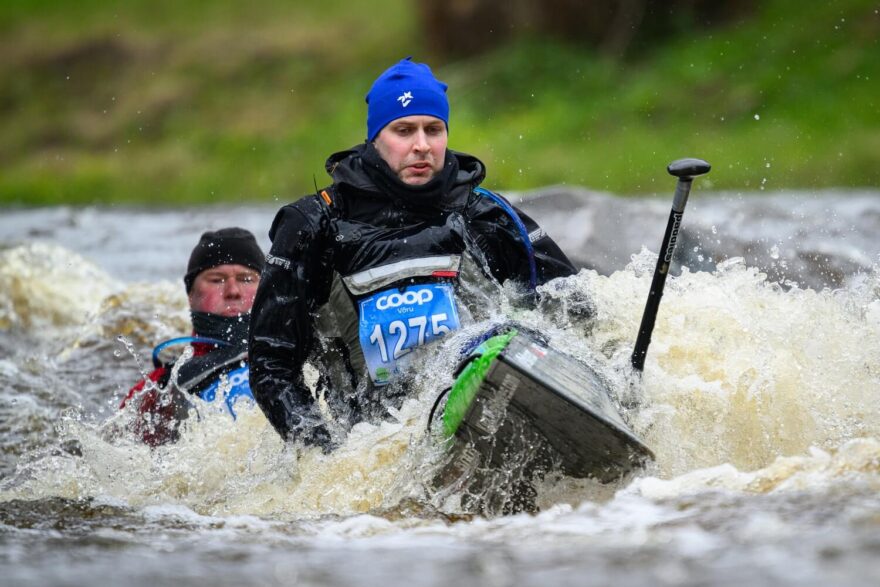
76th km, Leevaku power plant. On the left is a nice pier for the exit and another refreshment station. After crossing the road, it is easy to get on. After another 15 km, the last run follows in the town of Räpina with a large crowd of spectators. You can drive here by car, so every year after the race we go to see the other competitors, who still have 9 km left to finish.
The river is wider and there are many fishermen sitting on the banks. It is no longer so interesting and pretty. I also meet a few motorboats. I am approaching the Russian border and it is regularly windy here. This is probably due to the large Pskov Lake, where the wind can run across the surface. The state border runs through the lake.
I can already see the last bridge and the finish gate with the timer. So I didn’t make it under ten hours, my time is 10:04:40 and I finish overall as the 93rd boat and 31st K1, which is still defensible for a pensioner.

You drive to the shore and go straight into the big tent. Everyone who finishes gets a really beautiful and original medal around their neck. Everyone is also welcomed by a tireless commentator. When we hear “Tšehhi Vbariik”, we know that someone from us has finished. This is followed by a photo shoot in front of the wallpaper of the race with a boat and a tired face for an eternal memory.
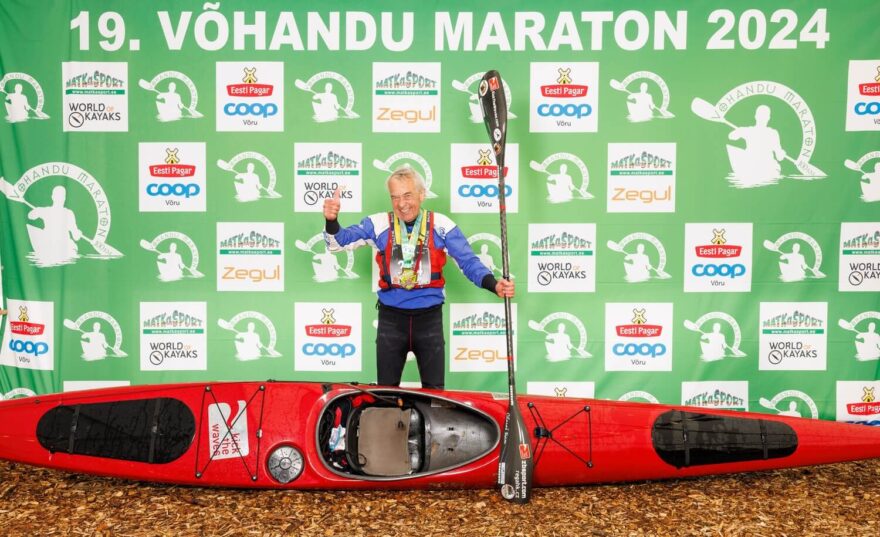
I go to the car to get my things. I immediately feel very cold, so with chattering teeth I go to the sauna tent. It’s not full yet, I’m gradually getting comfortable. Then refreshments, talking about experiences. In a few hours we could go again.
Photos from the race and results are on www.vohandumaraton.ee and this year the photos are truly unique. Many competitors have icicles on the peaks of their caps, hats, in their hair, in their beards. Despite the great cold, many of them will not forgive themselves for taking an involuntary bath. Even when looking at the photos, it makes me cold. The opposite is Lukáš Horák riding with Olda Dašek on K2, whom the photographer took a picture of while running barefoot.
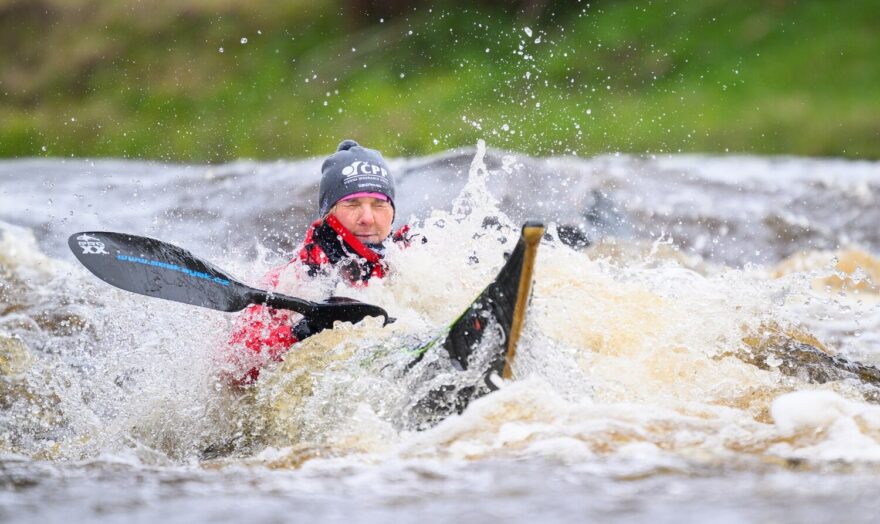
The river, the atmosphere and the excellent organization of this race make us come back here every year. We have managed to „attract“ many very good competitors. Hillar is surprised that every time someone from the Czech Republic wins overall or at least is on the podium. This year I convinced the aforementioned guys from us (Lukáš Horák and Olda Dašek – Sokol Hradec Králové at K2) that this was the race for them. We provided everything for them, so they came and did not disappoint. They finished second by just 3 seconds behind the winning Frenchmen, which is really very close in a 100 km race. They said that they and the „Frantíky“ overtook other boats and took turns in the lead. In one of the last rapids, the leading Frenchmen managed to capsize and their paddle floated away. The guys fished it out, brought it back to them and lost by a bit at the finish as a „reward“. In the category K1 women, our Míňa Preislerová took the gold!
And finally, some statistics. In 2024, 1,178 boats started and 1,032 finished, which is 88%. Competitors from 29 countries participated in the race. It is a pleasure that there are more and more of us from the Czech Republic every year. Will you join us this year too? Võhandu will be held on April 19, 2025.

